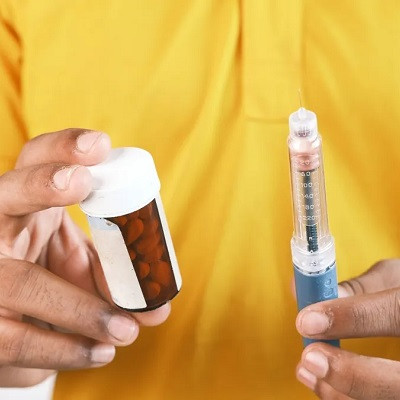
2022-09-09
Visited : 1644
Promising results seen in rats, human trials next on the agenda.
Researchers at the University of British Columbia (UBC) have developed an insulin tablet that can be taken orally and works just like the injectable, paving the way for a revolutionary treatment method for diabetes patients, a university press release said.
The treatment of diabetes was made possible by Canadian surgeon Fredrick Banting who was the first to isolate insulin in the year 1921. Since then, diabetes has been treated with insulin injections, taken up to four times daily.
Over the course of a century, science has advanced to a point where the source of insulin has changed. Banting isolated insulin from dogs, but insulin can be made today from yeast and E.coli. However, the mode of administering the hormone remains the same. This isn't the most convenient method of treatment.
The problems with swallowable pills
Researchers have attempted to move away from insulin injections by developing different treatment methods, such as swallowable pills and even drinkable insulin. However, these attempts have achieved limited success since much of the insulin ingested in such a way gets accumulated in the stomach.
For insulin to act effectively on blood glucose, it must quickly reach the liver. Ingested insulin can take anywhere between two-four hours to get to the liver, which is very slow compared to injected insulin which is available in the liver as quickly as 30 minutes and remains available for two-four hours.
UBC researchers have now developed oral tablets that match the availability rate of injected insulin.
How did the researchers do it?
To achieve this, the researcher developed an insulin pill that dissolves between the gums and the cheek in the mouth. The pill takes advantage of the mucosal membrane, a thin membrane found in the lining of the inner cheek and behind the lips.
This membrane enables direct insulin delivery to the liver, bypassing the stomach altogether. Not only does this allow for the insulin to be rapidly available, but it also saves the wastage of insulin that occurs when it goes through the stomach.
While 100 international units (IU) of insulin are used per shot in an injection to compensate for the loss when insulin is swallowed, researchers have been using 500IU of insulin in a single dose. In their experiments on rats, the UBC researchers found that nearly 100 percent of the insulin from the tablets went straight to the liver and none to the stomach. A dissolvable tablet that avoids wasting insulin along its way to the liver is an added bonus that the UBC researchers have managed with their pill.
Additionally, changing the mode of insulin delivery will also help save a significant quantity of medical waste, resulting from the injections that end up in landfills.
The researchers still need to test their dissolvable pill in humans. If all goes well, it could usher in a new era of diabetic treatment, which is easy to access and sustainable.
The findings of the study were published in the journal Scientific Reports.
Read the original article on Interesting Engineering.